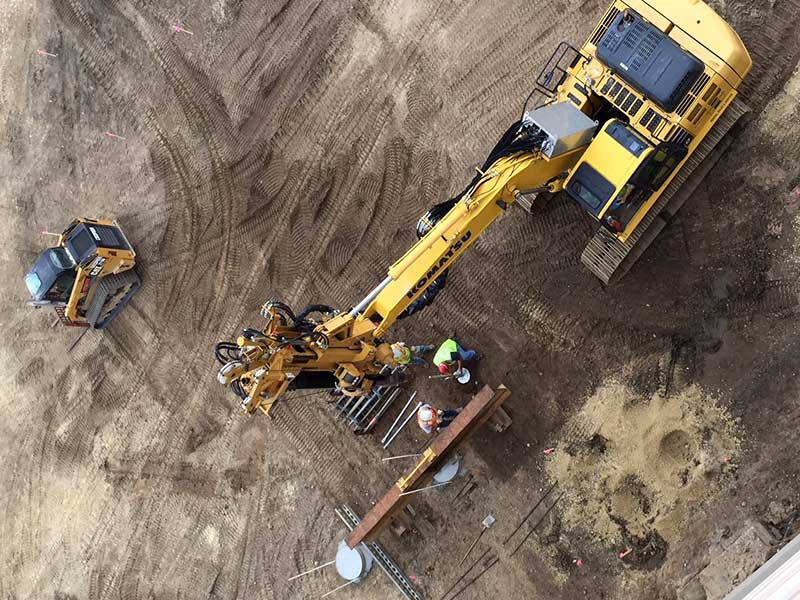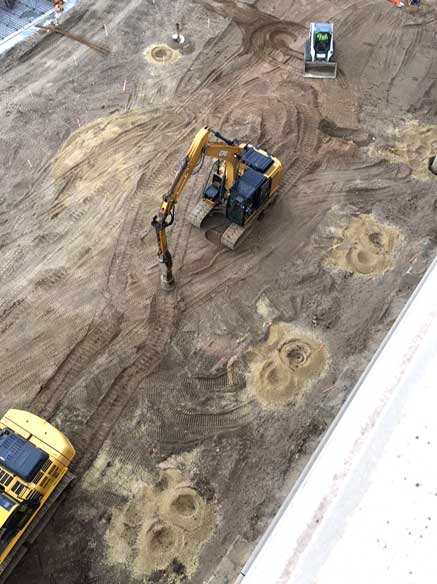Project Spotlight: 6/14/19 Differential Settlement Solution for Parking Ramp Addition


Tom Venema, P.E. from American Engineering Testing talks about the cost effectiveness of using ground improvement to manage differential settlement of a parking ramp addition rigidly connected to an existing parking ramp for client Wells Fargo.
When planning an addition to a Wells Fargo parking ramp in Minneapolis, the client and general contractor had some concerns about differential settlement estimates in the geotechnical report. The existing ramp and the six-story ramp addition would be rigidly connected, and differential settlement beyond the estimate could result in cracking at connection points.
 On a conference call, the project partners discussed two typical solutions. They could drive piles to match the structure of the existing ramp foundation — a costly and time-consuming solution. They could also install larger footings — but there might still be higher than estimated differential settlement.
On a conference call, the project partners discussed two typical solutions. They could drive piles to match the structure of the existing ramp foundation — a costly and time-consuming solution. They could also install larger footings — but there might still be higher than estimated differential settlement.
They brought up a third solution: ground improvement.
“The soil was sandy, dry and clean, but without a lot of binders, which was the only challenging part to the site,” said Tom Venema, P.E. and Vice President of American Engineering Testing in St. Paul, who reviewed the geotechnical report and headed up the construction testing on this project. “Working with the team at Ground Improvement, the Geopier® technology was installed 10-12 feet deep, really just to tighten up the settlement criteria. It was the perfect solution, and the Ground Improvement team was able to move very fast to install it. It was one of those ideal fits, just a really good solution with way more economical benefits than driving piles.”
In addition to saving time on excavation and driving piles, the Geopier solution allowed the construction team to use regular footings designed for 8,000 pounds per square foot of bearing pressure, which doubled the recommended bearing pressure. The fairly good soil only required ground improvement directly under the footings not the slab on grade.
“With close to a half-inch settlement differential, the engineers could design for that,” Venema said. “As you load the building, it settles fairly quickly with granular soils. By the time you’re adding the last floor it’s done settling and we could tell that the ground improvement solution was working.”
The ramp addition has more than doubled parking capacity for Wells Fargo, and the client and project team are happy with this cost-effective and fast solution to managing differential settlement within design parameters.
